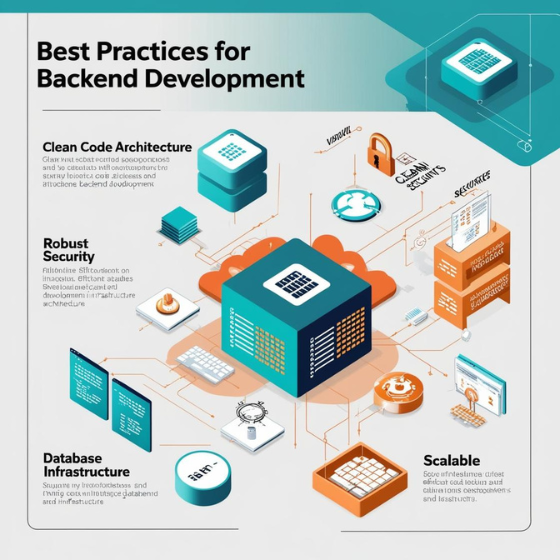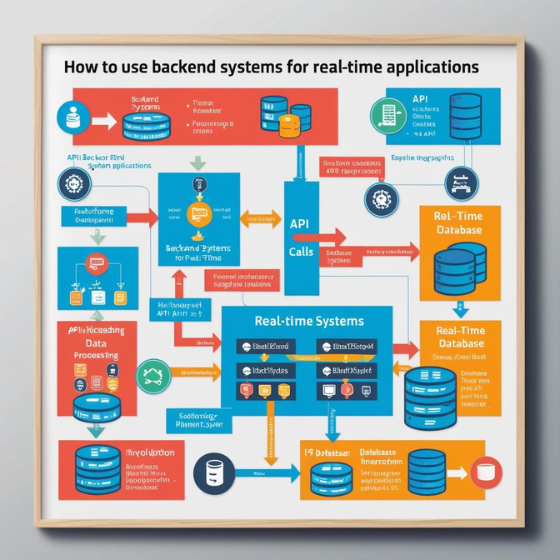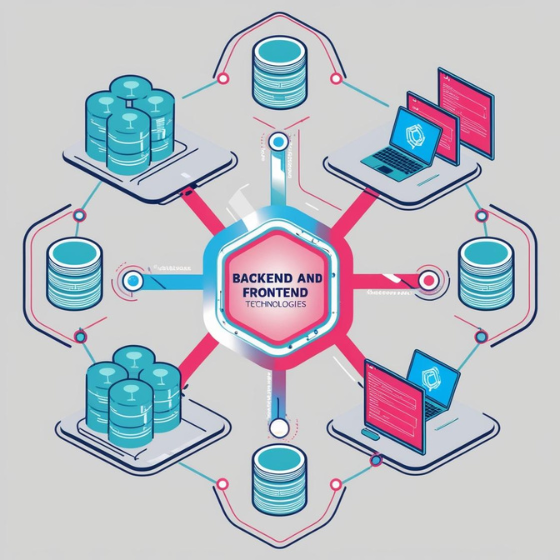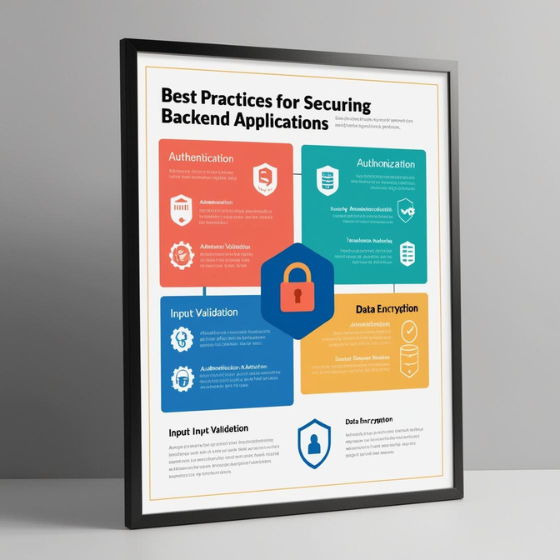Best Practices for Backend Development: Ensuring Robust, Secure, and Scalable Systems
Introduction
Did you know that 43% of cyberattacks target small businesses due to vulnerabilities in backend systems? This statistic underscores the importance of adopting best practices for backend development to secure and optimize your application. Whether you’re building a new backend from scratch or improving an existing system, implementing the right strategies can make a world of difference in terms of performance, security, and scalability.
In this blog, we’ll explore best practices for backend development that every developer should follow. From designing efficient APIs to ensuring robust security measures, these best practices will help you build reliable and secure backend systems. By incorporating these strategies into your development process, you’ll be well on your way to creating scalable applications that stand the test of time.
1. Design a Robust API Structure
A clean, well-structured API is the backbone of any backend system. APIs allow different parts of your system to communicate with each other and with external applications. When done right, they make your backend flexible, scalable, and easy to maintain.
API Best Practices:
- RESTful APIs: Use REST (Representational State Transfer) principles for designing your APIs. This standard is simple, scalable, and stateless, making it easier for clients and servers to communicate.
- Version Control: As your backend evolves, your APIs will need updates. Use versioning in your API URLs (e.g.,
/api/v1/and/api/v2/) to ensure backward compatibility and smooth transitions for users. - Use Proper HTTP Methods: Ensure that you use the correct HTTP methods—GET for retrieving data, POST for creating resources, PUT/PATCH for updating, and DELETE for removing resources.
By adhering to these best practices for backend development, you ensure that your API is easy to use, scalable, and maintainable. For more on optimizing APIs, check out our API development services.
2. Implement Secure Authentication and Authorization
Security is a major concern for any backend system. Implementing strong authentication and authorization mechanisms is essential to protect sensitive data from unauthorized access. Without robust security measures, your backend can become a prime target for cyberattacks.
Security Best Practices:
- OAuth 2.0 & JWT: For secure authentication, use OAuth 2.0 combined with JSON Web Tokens (JWT). OAuth 2.0 allows you to grant third-party applications access without exposing sensitive credentials, and JWT ensures secure data transfer between client and server.
- Encryption: Encrypt sensitive data, both at rest and in transit, using SSL/TLS protocols. This prevents hackers from intercepting sensitive information, such as login credentials, credit card details, or user data.
- Role-Based Access Control (RBAC): Implement RBAC to limit access based on the user’s role, ensuring that only authorized users can access critical resources.
Implementing these strategies will greatly reduce the risk of unauthorized access and protect both your system and its users. Learn more about secure backend solutions through our backend development services.
3. Optimize Database Design and Management
The database is at the heart of your backend system, storing and retrieving data for every request. A poorly designed database can slow down your system, making it difficult to scale as your application grows. By following best practices for backend development, you can ensure that your database is optimized for speed, security, and scalability.
Database Best Practices:
- Normalize Your Data: Normalization eliminates redundancy and ensures that your database is efficient. Break down data into tables that follow the principles of first, second, and third normal forms to avoid duplicate data.
- Indexing: Use indexing to speed up query performance. Index the most frequently queried fields to improve retrieval times. However, be mindful that over-indexing can degrade performance.
- Use Prepared Statements: To prevent SQL injection attacks, always use prepared statements with parameterized queries. This ensures that user input is properly sanitized and does not compromise your database.
By following these database optimization practices, you can ensure your backend system remains responsive and secure, even as your application scales. If you’re looking for database management solutions, explore our database development services.
4. Ensure Scalability and Flexibility
One of the biggest challenges in backend development is ensuring that your system can scale to accommodate increasing traffic and data. Scalability should be a core consideration from the outset to avoid performance bottlenecks down the line.
Scalability Best Practices:
- Horizontal Scaling: Instead of relying solely on upgrading hardware, consider horizontal scaling by adding more servers to your infrastructure. This allows you to distribute traffic and balance the load, preventing your system from crashing during peak usage.
- Microservices Architecture: Break down your monolithic application into smaller, independent services. This architecture improves scalability and flexibility, as each service can be scaled individually depending on demand.
- Caching: Implement caching mechanisms to reduce the load on your servers. Store frequently requested data in memory (e.g., using Redis or Memcached) to serve requests faster and reduce latency.
Building a scalable backend requires careful planning and a solid infrastructure. By following these best practices, you can ensure that your backend system grows with your application, without compromising on performance. If you need assistance with scalable architecture.
5. Implement Logging and Monitoring
To maintain the health of your backend system and quickly identify issues, logging and monitoring are essential. By tracking system performance and user activities, you can detect and resolve problems before they impact users.
Logging and Monitoring Best Practices:
- Centralized Logging: Use centralized logging systems like ELK Stack (Elasticsearch, Logstash, Kibana) or services like Loggly to aggregate logs in one place. This makes it easier to analyze logs and troubleshoot issues.
- Real-Time Monitoring: Set up real-time monitoring with tools like New Relic or Prometheus to keep track of system performance. Alerts can notify you of high CPU usage, slow database queries, or any other anomalies in your system.
- Automated Alerts: Create automated alerts to notify developers when specific thresholds are met (e.g., high error rates or abnormal traffic spikes). This helps mitigate issues before they become critical.
By actively monitoring and logging backend activity, you can improve system reliability, catch performance issues, and provide a seamless user experience. For more details on how to implement backend monitoring, visit our devops solutions.
6. Write Clean, Maintainable Code
Lastly, writing clean and maintainable code is one of the most fundamental best practices for backend development. Well-organized, readable code not only makes it easier for developers to collaborate but also ensures that your backend remains maintainable as your project evolves.
Best Practices for Clean Code:
- Follow Coding Standards: Adhere to coding conventions, such as naming conventions, indentation, and commenting. This makes your code easier to read and understand for all team members.
- Refactor Regularly: Continuously refactor your code to eliminate redundancies, improve efficiency, and ensure that your codebase remains clean and manageable.
- Use Version Control: Implement version control systems like Git to manage code changes, track bugs, and collaborate with other developers seamlessly.
By following clean coding practices, you can ensure that your backend is easy to maintain and scale as your business grows. Learn more about our clean code development practices through our custom development services.
Conclusion
To build a robust, scalable, and secure backend system, it’s crucial to follow best practices for backend development. From designing efficient APIs to ensuring secure authentication, optimizing database performance, and implementing scalable architecture, every step plays a vital role in ensuring the success of your application.
At Sodio, we specialize in helping businesses implement these backend development best practices. Whether you’re starting a new project or optimizing an existing one, our team of experts is ready to guide you through the process. Reach out today to explore our backend development services and take your application to the next level.







